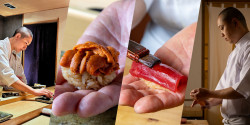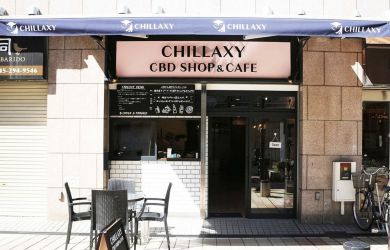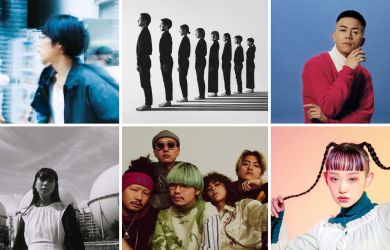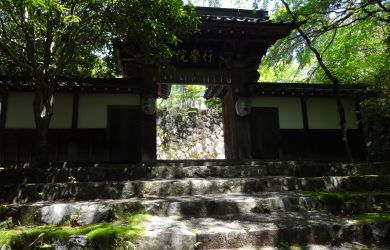
January 27, 2011
Mai Chau
The Vietnamese valley is a rich mix of ethnic minorities—and butterflies
By Metropolis
Originally published on metropolis.co.jp on January 2011

Photos courtesy of Mai Chau Lodge
We pedal our bikes through a fresh stream that has burst out over the once-dusty path. As if on cue, a flurry of small butterflies with wings of vivid yellow, orange and white swarm around my bike’s basket, playing in the breeze before fluttering away. We carry on along the winding path, making our way through the countryside of the Mai Chau highlands in northern Vietnam.
With its terraced rice paddies and diverse minority ethnic populations, this valley settlement, 135 kilometers southwest of the capital of Hanoi, is somewhat akin to the frontier town of Sapa. But unlike its counterpart in the far north, Mai Chau hasn’t yet been completely overrun with tourists.
 The area’s population of nearly 50,000 includes a sampling of Vietnam’s 54 minority groups: White Thai, Hmong, Zao, Muong, Tay, Hoa and Viet. All have their own language, customs, style of dress and beliefs, and while some are increasingly Westernized, others continue to live in small village communities, which visitors can walk, ride or trek through.
The area’s population of nearly 50,000 includes a sampling of Vietnam’s 54 minority groups: White Thai, Hmong, Zao, Muong, Tay, Hoa and Viet. All have their own language, customs, style of dress and beliefs, and while some are increasingly Westernized, others continue to live in small village communities, which visitors can walk, ride or trek through.
Our route is dotted with such settlements. Some seem barren, with adults working the fields while kids play in the waters of a lake. Others are a little livelier, as when a pudgy man with rosy cheeks invites us to a dance show in slurred English as we near the edge of his village.
We push on and start to wind back to our lodge, making our way through Lac Village. This is home to the White Thai, named after the color of the women’s traditional tops. Makeshift shops beneath each home sell colorful silk scarves, embroidered bags and patchwork quilts, breaking up the monotony of the pale stilt houses and their thatched palm-leaf roofs.
The town is geared towards tourists, but it retains a more laidback vibe than you’d get in Sapa. The ladies here love to chat in the hopes of a sale, but they seem just as happy to sit back and watch from their low stools, keeping the conversation between themselves. One slender older lady pulls my top taut as she drags me deeper into the shade of her home to peek inside a wide bamboo basket. I glance in and see that it is alive with squirming silkworms.
 Besides trekking and biking, tourists typically attend the Sunday market. This weekly affair draws in the ethnic minorities that live throughout the valley and surrounding mountains. Part tourist event, part neighborhood gathering, it allows vendors to sell produce from their farms along with trinkets and clothing targeted towards out-of-towners.
Besides trekking and biking, tourists typically attend the Sunday market. This weekly affair draws in the ethnic minorities that live throughout the valley and surrounding mountains. Part tourist event, part neighborhood gathering, it allows vendors to sell produce from their farms along with trinkets and clothing targeted towards out-of-towners.
There’s the option of extending a village visit with a homestay, trading in your hotel room for a thin mattress on the bamboo-slatted floor of a family’s hut. The home-cooked meal typically follows traditional methods, and overnight guests may find themselves eating rice cooked and served in bamboo, washed down with strong rice liquor.
Instead, we choose the area’s main Western-style option, the Mai Chau Lodge. The hotel has 16 rooms with en-suite bathrooms, and while it doesn’t offer an authentic experience, it does provide some privacy.
Next to the main lodge is a slightly rickety Sala pavilion above a lotus pond, which we use to practice yoga during our stay. As we move through poses, a thunderstorm starts to roll in. The sky darkens and the lightning reveals brief flashes of the mountain peaks and expansive fields around us. Hanoi feels a long way away.
Trip Tips
 Accommodation at Mai Chau Lodge (double rooms from US $128; www.maichaulodge.com) includes complimentary round-trip transfers by shuttle bus from Hanoi. The trip takes approximately four hours each way. There are a number of guesthouses in the local villages, but if you want to go local it’s best to organize a package tour with a reputable tour company such as Buffalo Tours (www.buffalotours.com) to help with transfers and translation. The best time to visit is between September and April, when the weather is slightly cooler and there is less chance of rain.
Accommodation at Mai Chau Lodge (double rooms from US $128; www.maichaulodge.com) includes complimentary round-trip transfers by shuttle bus from Hanoi. The trip takes approximately four hours each way. There are a number of guesthouses in the local villages, but if you want to go local it’s best to organize a package tour with a reputable tour company such as Buffalo Tours (www.buffalotours.com) to help with transfers and translation. The best time to visit is between September and April, when the weather is slightly cooler and there is less chance of rain.







